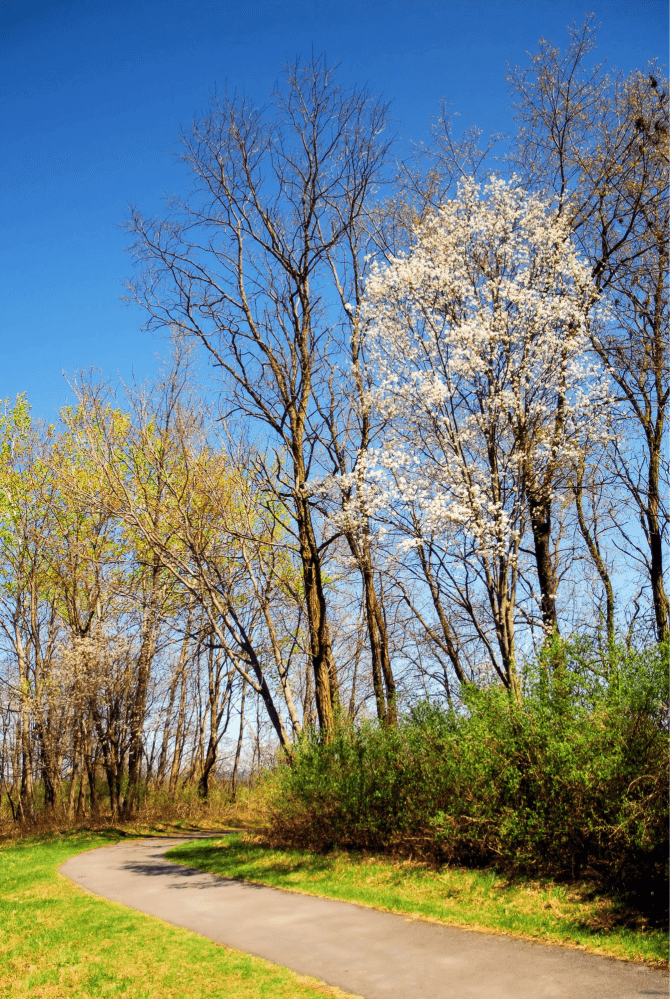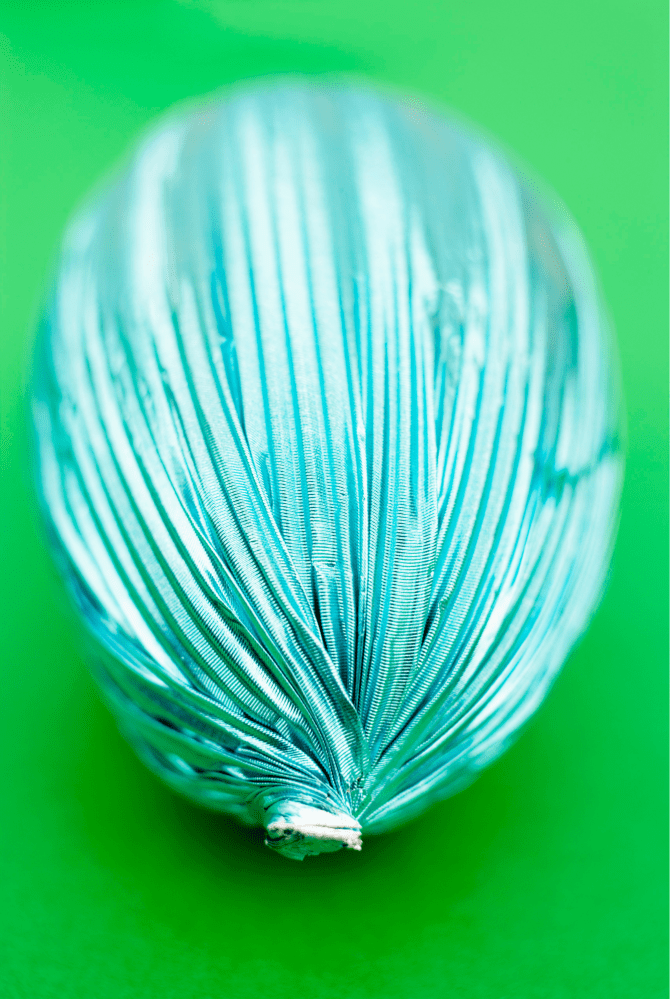
What is the Spring Equinox?
The Spring Equinox takes place between March 19-22 in the Northern Hemisphere. During this time, the direct rays of the sun hit the equator, making day and night equal in length. The most important part of the day is when the sun hits its zenith, the precise moment when the sun is perfectly lined up with the equator. This moment marks the first day of spring, with the light triumphing over the darkness. The earth begins waking up, plants start to sprout from the ground, and animals come out of hibernation.
What is Ostara?
Ostara is a Pagan solar holiday honoring the spring’s warmth, light from the sun, and the awakening of the earth. Pagan celebrations during this holiday have themes of balance, renewal and rebirth. The symbols of Ostara are spring flowers, fairies, butterflies, rabbits and eggs. The colors of Ostara are pastels, yellow, orange, lavender and green.
There is much debate in the Pagan community regarding the origins of Ostara due to the lack of primary sources about this holiday. One theory is the name of Ostara came from the Anglo-Saxon goddess Eostre. Another theory is that Eostre is more of a localized goddess in Kent County, England. Despite the questions of her origins, Eostre is associated with modern-day Pagan traditions of Ostara.
Regaining Balance
The Spring Equinox reminds us to strive for balance in our lives. The world around us can be stressful to our body, mind and spirit. Some ways you can regain that balance are by going outside to enjoy the warmer spring weather, starting a new project, doing some spring cleaning, or trying out a new hobby. Try the five-minute rebalance exercise below while doing homework or studying for an upcoming test.
Five-Minute Rebalance Exercise
- Leave the space you are currently working in to go for a short walk. Your walk could be outside, in a hallway or in another room.
- As you walk, focus on your breathing. As feelings or thoughts come up, hold them for a moment before slowly letting them go. Bring your focus back to your breathing.
- Continue walking but change your focus to the things around you. What do you see? Notice the colors, the textures, the quality of light. Again, if feelings or thoughts come up, hold them for a moment before slowly letting them go.
- Return to your homework space. Sit down and close your eyes. Take three deep, slow breaths. As you exhale each time, allow yourself to release any tension your body is carrying.
- Return to homework. Your mind and body should be back in balance from the brief mental and physical break.
Planting Seeds

Planting flowers indoors is a great way to celebrate the rebirth of the earth. Try planting one of the flower seeds below. The flowers can be enjoyed indoors or transplanted outdoors after the last frost.
Flowers to start indoors:
- Marigold
- Bachelor’s Button
- Cleome
- Moss Rose
- Zinnia
- Calendula
- Celosia
- Four O’Clock
- Sweet Pea
- Pansy
- Snapdragon
Seed Magic
- Before planting your seeds, hold the seeds in your hand and whisper to them a goal you are working on achieving this spring.
- As you plant your seeds into the dirt, visualize the flowers growing as you make progress towards your goal.
- Every time you water your plants, visualize yourself achieving your goal.
- Your goal should be achieved by the time your flowers are blooming.
If you have not achieved your goal or your flowers fail to bloom, it is time to re-examine your goal. What steps have you made? What steps do you still need to complete in order to meet your goal? Is this goal still achievable or should you try something different?

Shaking Off Those Winter Blues
The Spring Equinox marks the end of winter. There is now more daylight than night, with each day getting slightly longer. Take a walk during a sunny day to celebrate the coming of spring and shake off those winter blues.
Five Senses Spring Walk
- First, dress appropriately for the weather. Wear waterproof boots and warm clothes.
- As you walk outside, take a moment to use all your senses.
- Can you hear the snow melting, the birds chirping, the grass growing?
- Can you smell the wet snow, the thawed mud, the spring air?
- Can you see plants sprouting from the earth, buds on the trees, animals awake from hibernation?
- Can you feel the cold snow, the wet earth, the soft plants?
- Can you taste the fresh air or the icicle drips?
- After you have engaged all your senses, walk back to your home. Reflect on your experience by writing it down in a journal or sharing it with a friend.
Egg Traditions Around the World
Many spring traditions have the symbol of the egg, including Ostara. Eggs represent new life and new beginnings. Try out one of the egg traditions below to honor the new life that comes with springtime.
- Pysanky are beautifully decorated Ukrainian eggs using dyes and beeswax.
-
Norooz Eggs are beautifully hand-painted eggs originating from Persia.

- Washi Eggs are eggs decorated with paper that are popular in Japan.
- Cascarónes are confetti-filled eggs originating from Mexico. Eggs are hollowed out, decorated with tissue paper, and filled with confetti. Break a cascaróne over someone’s head for good luck.
- Ostereierbaum are trees decorated with colored eggs originating from Germany. They are also called Easter trees and bring a pop of color to trees just starting to bloom.
- Chocolate Eggs are taken to the extreme with the giant chocolate egg from Argentina. Try to make your own chocolate egg using baking chocolate and an egg mold.
- Marzipan Eggs are a sweet tradition from India. Marzipan is a combination of ground almonds, sugar, and egg whites that is baked and decorated to look like eggs.
- Roasted Egg is part of the Passover Seder plate for Jews.
- A Giant Omelet is made to serve the whole town of Bessières, France. Make a giant omelet for everyone in your home.
- Egg Roll is an Easter tradition at the White House where children use wooden spoons to push hard-boiled eggs down a hill. Whomever gets their egg the furthest without cracking wins.
- Egg Tapping is an egg game with many varieties throughout Europe and the Middle East that may have originated in Greece. Participants select one colored hard-boiled egg from a basket. Then, players take turns hitting the pointy side of their eggs together. If your egg cracks, you are out. The last player with an uncracked egg wins.
Sources
Diaz, J. (2019). Witchery: Embrace the Witch Within. Hay House Inc.
Dugan, E. (2018). Seasons of Witchery: Celebrating the Sabbats with the Garden Witch. Llewellyn Publications.
Connor, K. (2015). Ostara: Rituals, Recipes & Lore for the Spring Equinox. Llewellyn Publications.


Add a comment to: Celebrate the Spring Equinox and Ostara